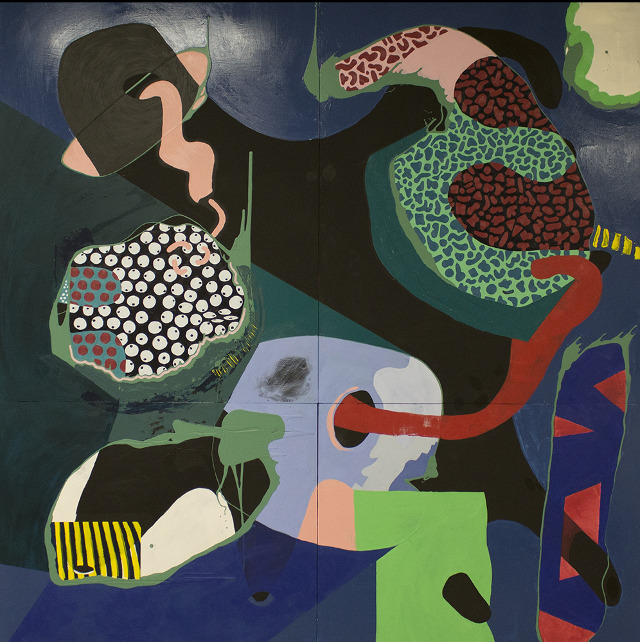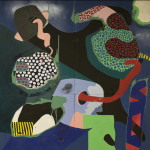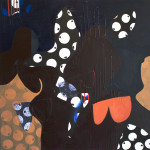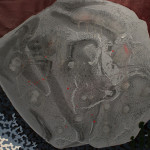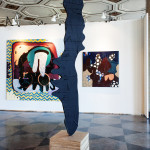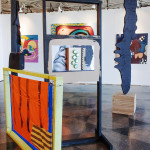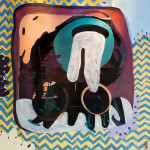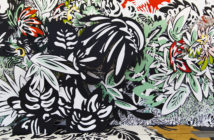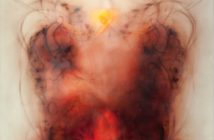With the end of Big Red & Shiny’s first academic year quickly approaching, we’ve been taking stock of the past 8 months to identify our successes and re-evaluate where we’d like to have a larger impact. One part of our mission has always been to highlight new voices within our cities—emerging artists who are bringing exciting ideas and techniques to their mediums or those who may just be graduating into our arts scene. Around this time every year we are provided with some of these best new voices and, given the number of academic institutions in our area, we have quite a bit to choose from. It only seems fitting then that we take the time to recognize the important work coming out of our schools. We will, of course, only be able to represent a small sampling of those institutions, but over the next few weeks we hope to provide a snapshot of promising, soon-to-be matriculated Boston artists.
........................................................................................
Boston University Bachelor of Fine Arts Exhibition
Something that tends to be consistent among many thesis shows is the sometimes underwhelming lack of exploration of one’s medium and, as Evan Smith pointed out yesterday in his review of the MassArt MFA Thesis Exhibition, "A handful of different ideas tend to hang around from year to year in each department." Obviously this isn’t just true of MassArt, but of most educational institutions and is often a reflection of institutional structuring of disciplines or, more directly, the influence of faculty. The latter is often most visible in undergraduate work, a time when students look for the most direction as they have yet to fully explore their own voice and aren’t always encouraged to do so. It was for these very reasons, when visiting the opening reception for the BU BFA exhibition, that I was struck by the work of New Orleans-native Ashley Teamer. I connected with her work for a few reasons: First, the visual language that she had developed surpassed my expectations of what I was going to see—the quality and ambition with which she creates is beyond the typical undergraduate, more reflective perhaps of some of the graduate level work we’ve been discussing in this series. Second, she was able to develop a thoroughly cohesive body of work that spanned disciplines and presented them with a refreshing theatricality (during the opening I caught her repeatedly walking through her sculptures to greet friends and family, often bringing them over to a piece to turn on a hidden electronic component that set the piece in motion). Finally, conversing with Ashley gave me further insight into what has been shaping her work and it was exciting to hear how our backgrounds overlapped a bit, her experiences as an undergrad at Boston University, and why she is choosing to leave Boston after graduation.
Brian Christopher Glaser You were a freshman in high school when Hurricane Katrina hit. How did this affect your education? Were you yet interested in the arts?
Ashley Teamer Prior to high school I had attended an elementary and middle school that integrated art into their curriculum. My freshman year of high school was also my first year attending the New Orleans Center for Creative Arts. NOCCA is a half-day program so I attended Benjamin Franklin High School for one half of the day and NOCCA for the other. NOCCA has amazing facilities—a photography lab with dark rooms, a Mac lab, large drawing and painting classrooms, a ceramics studio with kilns and wheels, and a 3D studio with metalsmithing, welding, and carpentry capabilities. When I was forced to evacuate New Orleans I attended a school in Monroe, Louisiana whose art class consisted of copying Tabasco ads. It became very apparent that what I had in New Orleans was a gift. Thankfully NOCCA sustained little damage from the storm and Benjamin Franklin was cleaned by dedicated parents and teachers so I was able to return in January 2006 to complete my freshman year.
I think Katrina made me appreciate what I had in all aspects of my life, my family, and the really special institutions that were available to me (Ben Franklin is a top performing, academically rigorous high school). I had six feet of water in my house in the Gentilly neighborhood. Because Katrina destroyed all of my material possessions I immediately replaced them with art. I played with Legos my entire life up until my collection was destroyed by the hurricane. I feel that those little toys and games that I use to play with have been replaced my art.
BG You seem to work fluidly between sculpture and painting—with your sculptures retaining quite a shallow depth of field and painterly composition and your paintings highlighting a lot of material manipulation and textures. How does the relationship between the two disciplines exist in for you in your work and concepts? Do you feel that the delineation between these disciplines is arbitrary for what you are trying to accomplish?
AT The more I became interested in painting, the more difficult it was for me to conceptualize making a singular object in my sculpture studio class. My junior year and my first year in sculpture studio was very frustrating because my class was centered around making objects and I knew I liked building things but I couldn’t think of anything to make. I was already stuck thinking about [my paintings, videos, and sculptures]as separate ideas and had trouble finding someone to break me out of that. It was not until this last semester that I was finally able to channel all of my sculptural energy into something that married my interests. I owe much of my success to my teacher Rune Olsen. With his encouragement I was able to see how my paintings could take a three-dimensional form. I think for some the line between painting and sculpture is fine—they don’t notice it and they don’t care. It was very troublesome for me and hindered my ability to think about how I wanted my work to transcend those boundaries.
BG Are your pieces purely formal exercises or do you see them as coded conceptual compositions? I ask because in a previous interview you mentioned that you were translating certain life experiences into abstract portraits.
AT My work floats between formal studies and personal narrative. For example, with my piece S-Room I wanted to paint two paintings—one on top of another—like a chunkier version of David Salle, just the idea that one thing will cover another on a flat surface. On the other hand, the eyeball sculpture in my BFA exhibition features an image of Allen Iverson behind electronics with rotating pupils. That symbol I got from watching older cartoons on YouTube with racist undertones that featured African Americans with large white eyeballs and eventually I found myself including the symbol in many of my pieces. Another one of my paintings, This ‘Aint Cha Mammas Charm Bracelet, I created with my girlfriend in mind and utilized the technique learned in S-Room. So my ideas materialize in different ways and I try to go after all of them. Like many artists, the ideas and techniques created in my more formal works eventually develop and become a visual narrative and a way of communicating deeper personal meanings.
BG Now that you’re graduating, what’s next for you?
AT I am moving back to New Orleans and 30% of the reason is because of my family but the other 70% is the environment and opportunities available. The more that I looked into the area the more I just generally wanted to be there and become a part of the blossoming art community. While visiting this past January I spoke with an artist named Jim Richard and he told me a lot about the current state of the New Orleans arts scene. And in my times visiting home while living here it is very apparent that things are happening there (their arts Biennal Prospect New Orleans, the growth of a new arts community in the St. Roch/Bywater District, etc). So I applied for and was accepted to The St. Roch Community Church Residency and feel that it is perfect because it puts you right in the middle of that new, growing arts community that I know nothing about and am excited to engage with.
- Ashley Teamer Don’t Walk Alone In Brookline, 2013 8 x 8′ Photo © Ashley Teamer
- Ashley Teamer Black Diva, 2013 3 x 3′ Photo © Ashley Teamer
- Ashley Teamer Chales Teamer III, 2012 Photo © Ashley Teamer
- Installation of Ashley Teamer’s BFA thesis exhibition. Photo courtesy of Evan Smith.
- Installation of Ashley Teamer’s BFA thesis exhibition. Photo courtesy of Evan Smith.
- Ashley Teamer S-Room, 2013 7 x 7′ Photo courtesy of Evan Smith
The BU BFA Exhibition at 808 Gallery closes today, Friday May 10.

